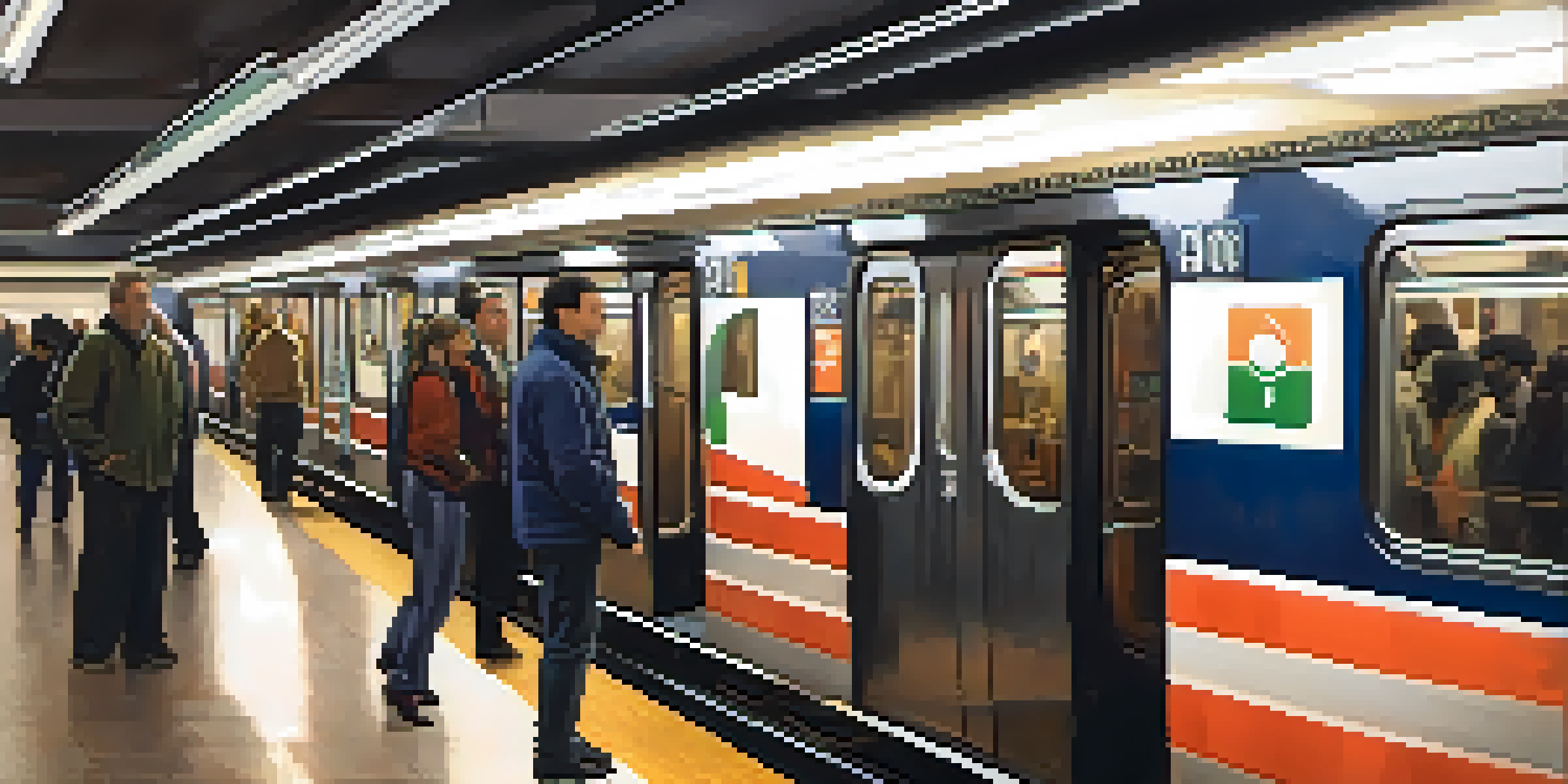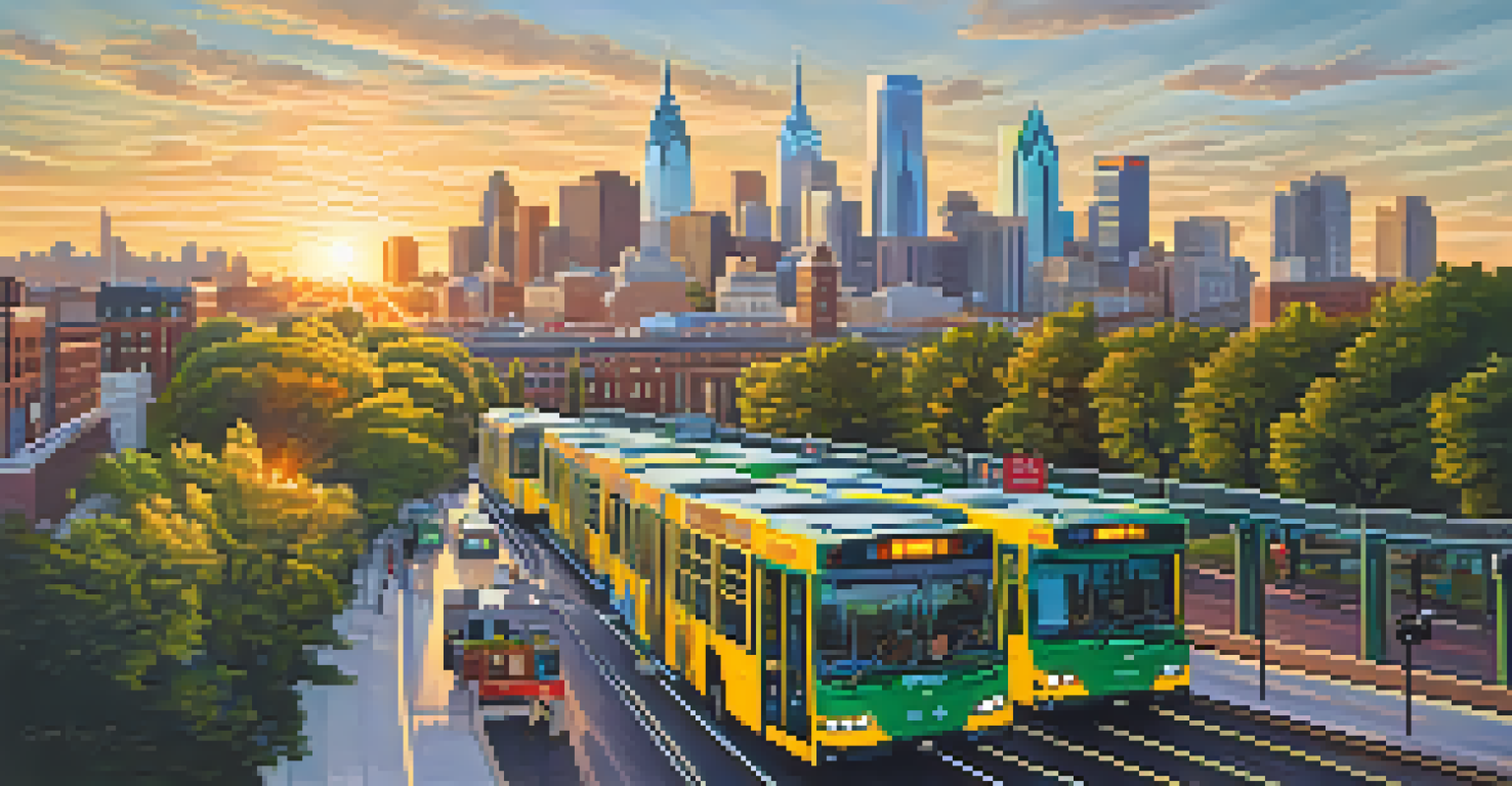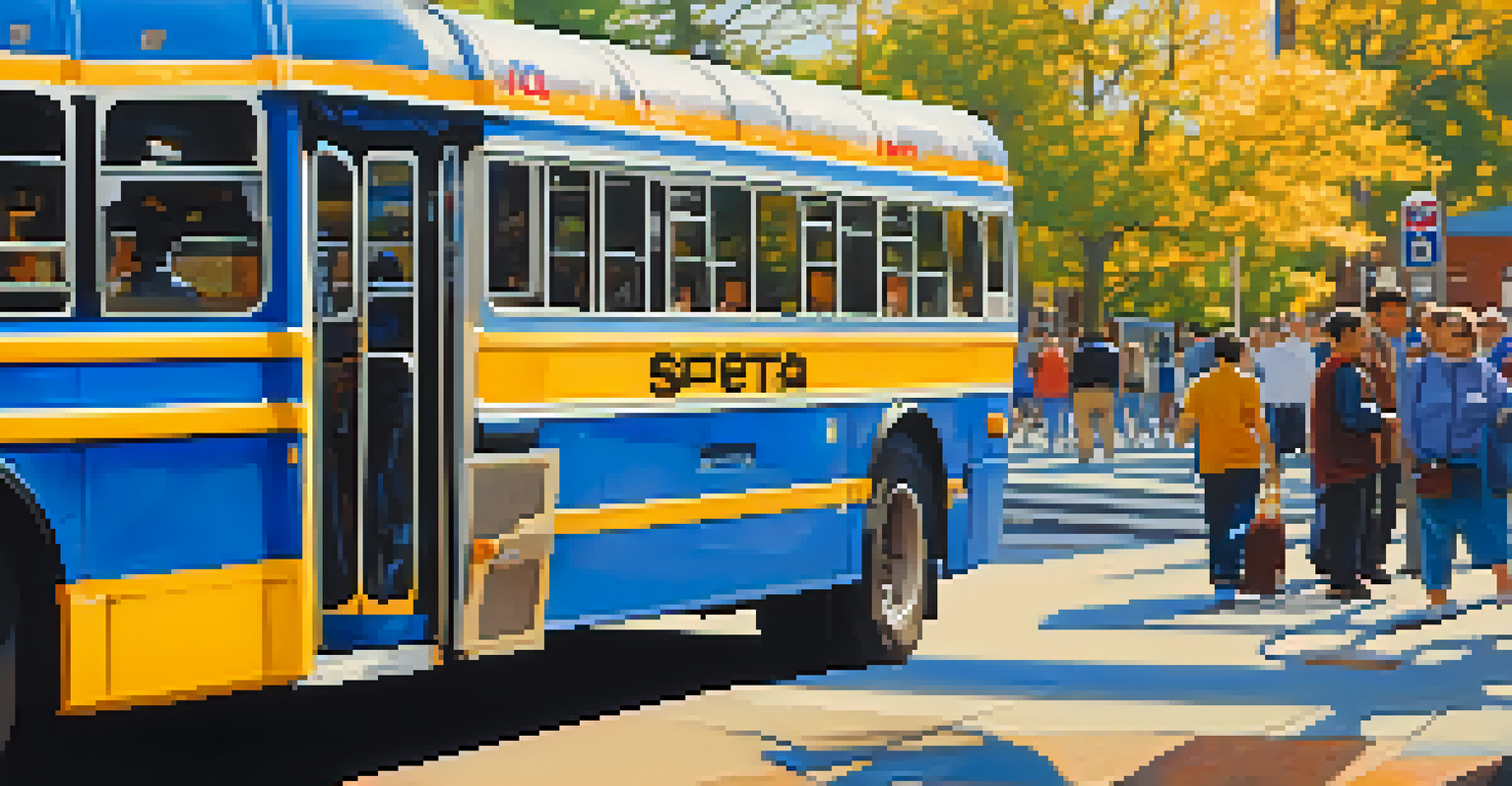Comparing Philadelphia's Transit System to Other Cities

Overview of Philadelphia's Transit System
Philadelphia boasts a robust transit system, primarily operated by the Southeastern Pennsylvania Transportation Authority (SEPTA). With a mix of buses, subways, and trolleys, it serves the city and surrounding areas effectively. This extensive network connects residents to various neighborhoods, job centers, and cultural hubs, making it a vital part of daily life. However, its effectiveness can vary depending on the time of day and specific routes.
Public transportation is a vital lifeline for those who cannot afford to own a car or choose not to. It connects people to jobs, education, and opportunities.
One of the standout features of Philadelphia's transit system is its affordability. SEPTA offers various fare options, including weekly and monthly passes, making it accessible for daily commuters. Additionally, the system emphasizes inclusivity, providing services for individuals with disabilities. This commitment to accessibility is essential in a city known for its rich history and diverse population.
Despite its strengths, Philadelphia's transit system faces challenges like aging infrastructure and service delays. These issues can lead to frustration among commuters, particularly during peak hours. Nevertheless, ongoing improvements and investments aim to modernize the system and enhance the overall rider experience.
Comparing Philadelphia's Transit System to New York City
When comparing Philadelphia's transit system to New York City's, the difference in scale is immediately apparent. The Metropolitan Transportation Authority (MTA) operates an extensive network that includes subways, buses, and ferries across the five boroughs. While Philadelphia's system is comprehensive, it pales in comparison to New York's vastness in terms of coverage and ridership numbers.

However, Philadelphia's transit system often excels in affordability and convenience for local riders. SEPTA's fares are generally lower than those of the MTA, making it more budget-friendly for daily commuters. Additionally, Philadelphia’s compact layout means that many residents can reach their destinations with fewer transfers, enhancing the overall experience.
Philadelphia's Transit Affordability
SEPTA offers budget-friendly fare options, making public transportation accessible for daily commuters.
Yet, New York City's subway operates 24/7, a significant advantage for late-night travelers. This constant availability makes it a preferred choice for many, while SEPTA's service hours can be more limited. Therefore, while both cities have their strengths, Philadelphia's system appeals to those who value affordability and accessibility.
Transit Systems in Washington D.C. vs. Philadelphia
Washington D.C.'s Metro system is known for its cleanliness and efficiency, making it a strong competitor to Philadelphia's transit. The Washington Metropolitan Area Transit Authority (WMATA) provides a seamless experience for commuters, with a reliable train system that connects the city to Virginia and Maryland. One notable feature is the system's punctuality, which often outshines SEPTA's performance.
The best public transit systems are those that are accessible, affordable, and efficient, allowing all residents to thrive in their urban environments.
In terms of pricing, both cities offer competitive fares, but D.C.'s Metro has implemented pricing structures that can be more challenging to navigate during peak times. This complexity may frustrate riders who are accustomed to SEPTA's straightforward fare system. However, D.C. does offer a variety of options that cater to different travel patterns, which is a plus.
Another point of comparison is the integration of technology. Washington D.C. has made strides in utilizing mobile apps and real-time tracking to enhance the rider experience. In contrast, while SEPTA has improved its digital offerings, it still trails behind in terms of user-friendly technology. This difference can impact how riders perceive their commuting experience in each city.
Los Angeles: A Different Transit Approach
Los Angeles is often viewed as a car-centric city, which makes its transit system fundamentally different from Philadelphia's. The Los Angeles County Metropolitan Transportation Authority (LACMTA) operates a network primarily comprised of buses and a light rail system. While it serves a large area, the reliance on buses can lead to longer travel times compared to SEPTA's more efficient subway options.
Despite the challenges, L.A.'s transit system has been making strides in recent years, with new light rail lines and improved bus routes. These developments aim to attract more riders and reduce traffic congestion. However, the overall reach and convenience of public transit in Philadelphia remain superior for those living in and around the city core.
Challenges of Aging Infrastructure
Philadelphia's transit system faces issues like service delays and outdated infrastructure, impacting rider experience.
One key advantage of L.A.'s transit system is its focus on expanding access to underserved communities. This dedication aligns with a broader trend across many cities, including Philadelphia, which is working to ensure equitable transit options. As both cities continue to evolve their transit systems, they face the challenge of balancing growth with the needs of their diverse populations.
Public Transit in Chicago: A Comparative Overview
Chicago's transit system, managed by the Chicago Transit Authority (CTA), offers a dense network of trains and buses, making it one of the largest in the U.S. Similar to Philadelphia, Chicago's system is praised for its accessibility and coverage, particularly in the downtown area. The iconic 'L' trains provide a unique commuting experience that sets it apart from SEPTA's offerings.
While both cities have extensive networks, Chicago's system operates with a more frequent schedule, especially during peak hours. This reliability makes it easier for commuters to plan their journeys without long waits. Additionally, the integration of technology, like real-time tracking, enhances the rider experience in Chicago, presenting a contrast to some of SEPTA's ongoing challenges.
However, fare prices in Chicago are typically higher than those in Philadelphia, which could deter some riders. Chicago's commitment to improving service and expanding access continues to develop, but affordability remains a crucial consideration for many commuters. Ultimately, both cities aim to create efficient transit experiences tailored to their unique urban landscapes.
Transit Accessibility: A Crucial Factor
Accessibility is a vital aspect when comparing transit systems, and Philadelphia has made significant strides in this area. SEPTA has implemented various initiatives to ensure that public transportation is accessible to individuals with disabilities. Features such as elevators in subway stations and designated seating on buses enhance the experience for all riders.
In contrast, cities like San Francisco have also prioritized accessibility, but challenges remain. The Bay Area Rapid Transit (BART) system struggles with limited elevator access and maintenance issues, impacting those with mobility difficulties. Philadelphia's ongoing improvements in transit accessibility demonstrate a commitment to inclusivity, a value that resonates with many residents.
Future Enhancements on the Horizon
Ongoing proposals aim to expand subway lines and integrate technology for a more efficient transit system.
Moreover, as cities evolve, the push for improved accessibility continues to gain momentum. Philadelphia's efforts serve as a model for other urban areas, highlighting the importance of ensuring that everyone can benefit from public transportation. This focus not only fosters community integration but also reflects the values of equity and social responsibility.
Future Improvements: What Lies Ahead for Philadelphia?
As cities adapt to changing needs, Philadelphia's transit system is poised for exciting improvements. Recent proposals include expanding subway lines and enhancing bus rapid transit services, aimed at increasing efficiency and ridership. These changes would not only benefit daily commuters but also attract new users who may rely on alternative transportation options.
Investments in technology are also on the horizon, with plans to incorporate real-time tracking and mobile payment systems. These enhancements will streamline the commuting experience and align SEPTA with other major transit systems across the country. By modernizing its offerings, Philadelphia can ensure that it remains competitive and meets the expectations of its riders.

Ultimately, the future of Philadelphia's transit system hinges on community engagement and input. By listening to the needs of residents, city planners can create a public transit framework that is inclusive, efficient, and reflective of the city’s dynamic culture. As Philadelphia continues to evolve, its transit system has the potential to become a model for urban public transportation.
Conclusion: Philadelphia's Place in Urban Transit Landscape
In the grand tapestry of urban transit, Philadelphia holds a unique position. While it may not boast the scale of New York City or the technological advancements of Chicago, it offers a reliable and affordable option for local commuters. The city’s commitment to improving accessibility and service reflects its dedication to fostering a vibrant urban community.
As we compare Philadelphia’s transit system to others, it's clear that each city has its strengths and challenges. By learning from one another and implementing best practices, cities can enhance their public transportation networks. Philadelphia's ongoing efforts to modernize its system will play a crucial role in shaping its future.
In conclusion, Philadelphia’s transit system is more than just a means of getting from point A to point B; it’s a lifeline for many residents. As the city continues to invest in its public transportation infrastructure, it has the potential to lead the way in creating a more connected and accessible urban environment.